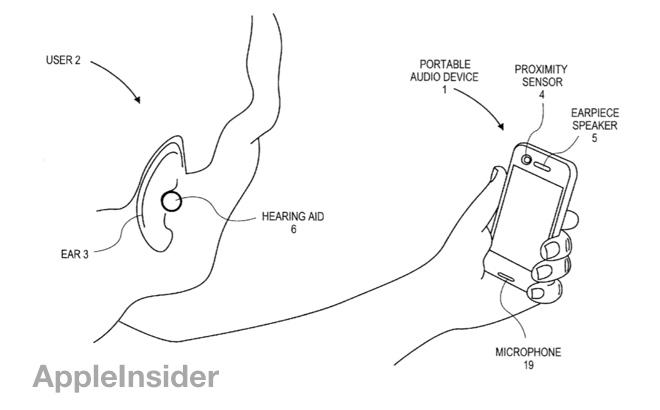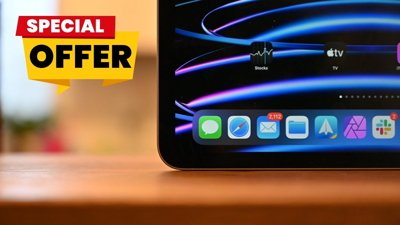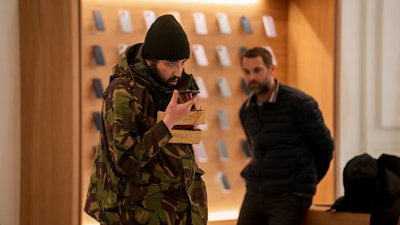A pair of new Apple patent applications published this week show potential new ways to interact with an iPhone: an unlock system that asks the user to identify a random image, and a way to identify if the current device user is wearing a hearing aid.
Image-based authentication
The first filing published by the U.S. Patent and Trademark Office this week reveals a new unlock method that could offer personalized security. The system would require a user to accurately identify one or more objects depicted in an image.
A user could have a series of custom images selected for the unlock system, and an iPhone would randomly select one of those pictures to display when a user wishes to use the device. The user would also provide authentication data associated with the image to ensure security.
In one example, the iPhone would display a picture of a person, along with a list of names. The user would have to select the name of the person by sliding the appropriate icon across the screen to unlock the device.
Apple's picture-based unlock method is a potentially secure way to ensure that only authorized users have access to a device, without the need to memorize a passcode.
The filing notes that a thief sitting on a bus could easily take note of the passcode entered by an unsuspecting person. Someone could also potentially decipher a device's passcode based on fingerprints on the display of the device.
By employing multiple potential pictures, Apple's method could make it more difficult for a thief to unlock the device. It could also allow a device to be shared more easily among a group of people, such as a family, without requiring each person to remember a passcode.
The proposed invention, first filed with the USPTO in 2011 and published this week, is credited to inventor Ethan T. Lowry.
Hearing aid detection
Apple's proposed concept for an advanced iPhone-based hearing aid system would automatically determine whether or not the device is being used by a hearing impaired user who is wearing a hearing aid. The system would use a proximity sensor and a magnetic field sensor to detect a nearby hearing aid.
The proximity sensor could detect a change in distance of the iPhone to the user's ear, while the magnetic field sensor could detect movement of the iPhone relative to the hearing aid.
"The device selects between a normal audio mode of operation and a hearing aid compatible mode of operation based on both the change in detected distance and the change in detected magnetic field," the filing states.
In the application, Apple notes that some users will share a single phone. In that scenario, it is cumbersome to disable and then reenable hearing aid support based on which user is operating the device.
Apple's system would resolve this issue by automatically detecting the presence of a nearby hearing aid and enabling the appropriate settings.
The automatically selected hearing aid mode could make the iPhone produce sounds that would be better suited to be picked up by a hearing aid, rather than directly by the user's ear. Audio could also be directly transmitted to the hearing aid over Bluetooth — a feature Apple already supports with iOS 6 and upcoming "Made for iPhone" hearing aid accessories.
The application was first filed with the USPTO in August of 2011, and is credited to inventors Ching-yu John Tam and Shaohai Chen.
 Neil Hughes
Neil Hughes








-m.jpg)






 Christine McKee
Christine McKee
 Malcolm Owen
Malcolm Owen

 Charles Martin
Charles Martin


 Mike Wuerthele
Mike Wuerthele


-m.jpg)






4 Comments
iPhone: Hearing Aid Compatibility (HAC) http://support.apple.com/kb/HT4526
This is still better than CAPTCHA-to-unlock.
In one example, the iPhone would display a picture of a person, along with a list of names. The user would have to select the name of the person by sliding the appropriate icon across the screen to unlock the device.
Apple's picture-based unlock method is a potentially secure way to ensure that only authorized users have access to a device, without the need to memorize a passcode.
This example is only useful if the person trying to get into your phone is a complete stranger who doesn't know any of your contacts. If for example you wanted to keep your co-worker, spouse, child, or any of your mutual friends out, you would need some other method as many of your contacts know one another.
Extra security and hearing aid scanning